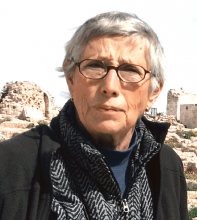You are here
Gaza protests are against Israeli ethnic cleansing policy
May 03,2018 - Last updated at May 03,2018
Four Palestinians were shot dead last Friday in Gaza during the protests against their incarceration in the narrow, impoverished coastal strip. The total of fatalities during the previous consecutive five Fridays was 45, while 6,000 have been wounded. The demonstrations, which began on March 30, are a departure from the usual events staged by Palestinians seeking to end the Israeli occupation of their homeland. Gazans are not only demanding an end to the 1967 occupation which continues in Gaza by means of siege and blockade, but are also calling for the reversal of the ethnic cleansing of 1948 which saw 750,000 Palestinians transformed into refugees, 200,000 of them driven into Gaza.
During its 1948-49 military campaign, Israel eradicated the UN plan under which Palestinians were supposed to found a state in 45 per cent of Palestine and the Zionists were meant to receive 55 per cent of the country. Instead, Israel’s underground army seized 78 per cent, evicted the Palestinians, seizing their urban neighbourhoods in main cities and destroying their towns and villages.
Gazans are asking to go back to the homes and lands from which they were expelled during Israel’s war of establishment. The mass assemblage of Palestinians along the fence Israel has built around Gaza is called the “Great March of Return”. Palestinian “return” is precisely what the Israelis have always rejected during the past 70 years. The word “return” gives the Israelis nightmares. By reviving the concept of “return”, young Palestinians, grandchildren and great-grandchildren of the 1948 generation have courted a brutal, ugly response from Israel.
Israelis are haunted by UN General Assembly resolution 194, paragraph 11, which states: “...refugees wishing to return to their homes and live at peace with their neighbours should be permitted to do so at the earliest practicable date, that that compensation should be paid for the property of those choosing not to return and for loss of or damage to property...”, presumably of those who do return. This brief paragraph is, for Palestinians, their “right of return” while Israelis — and their friends — argue the “practicable date” for “return” will never arrive.
Young Gazans have now decided “practicable” or not, they demand their “return”.
Their 200,000 forbearers now number more than 1.3 million out of a total Gaza population of more than 2 million.
Fearful of the banner of “return,” the Israeli government and army have responded with Israel’s usual “disproportionate” force. This time, this has backfired because Israel stands accused of overreacting by many key observers.
During the initial event, 17 Palestinians were killed and 1,400 were wounded. To launch the current campaign, it is significant that Gazans chose the anniversary of Land Day, March 30, 1976, when six Palestinian citizens of Israel were slain when demonstrating against Israel expropriations of land owned by their community.
This anniversary coincided with the more significant anniversary marking the beginning of the offensive by the Hagahah, the Zionists’ underground army, to not only defend territory awarded to the Jewish state in the UN plan but also to seize territory allocated to the Palestinian state. During the weeks up to the declaration of Israel on May 15, 1948, attacks by the Haganah and the allied Stern Gang and Irgun Zvi Leumi resulted in the exodus of 250-300,000 Palestinians.
During the first eight months of the war, the Israelis focused on northern and central Palestine. They shifted their forces to the south — the Negev and Beersheba — in November, December 1948 and July 1949. At that time, Israel had captured the entire Negev and lopped off from Gaza more than half of the district’s territory, squeezing refugees into the narrow strip of land along the coast. This has become one of the most densely populated territories on the face of the globe. Gaza has also been deliberately rendered among the poorest.
If Israeli leaders had been wise, after occupying Gaza in 1967, they would have encouraged economic, social and political development of the strip. They have done the opposite. At first, they created a “captive” economy by discouraging local enterprise and providing work at low pay for tens of thousands of Gazans. However, the number of Gazans permitted to enter Israel was dramatically cut in 1991, when Israel began the progressive isolation of Gaza and stepped up a policy of de-development.
There was a brief window of opportunity and hope in 1994-96 when the Palestinian Authority took over administration and made an effort promote business and tourism in Gaza, but this was cut short in 2000 when the second intifada erupted, following the collapse of the Oslo peace process. Israel’s withdrawal of soldiers and settlers in 2005 should have offered Gazans a new deal but did not. Israel retained total control of the strip from the land, sea and air and continued to wage war on Gaza and deprive its citizens of the means to build productive lives.
Gaza is now totally surrounded and cut off from both Israel and Egypt. Most of the young men and women camping near the Israeli fence and taking part in protests have no hope of a decent future. They have never left Gaza and have little expectation that they ever will. Consequently, they are prepared to die and suffer severe injuries delivered by Israeli snipers using weapons that leave exit wounds in the size of closed fists in chests, arms and legs. Bereft of hope, they have stopped being afraid. Tomorrow, they will again rally behind the Palestinian flag, throw stones and Molotov cocktails at the fence and die and suffer terrible wounds in order to demand the right to return home to homes and places that no longer exist.













